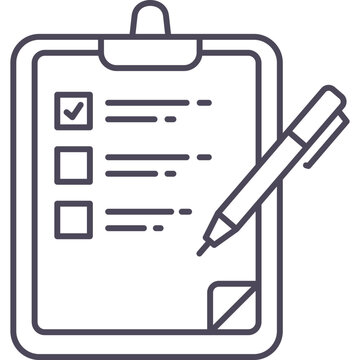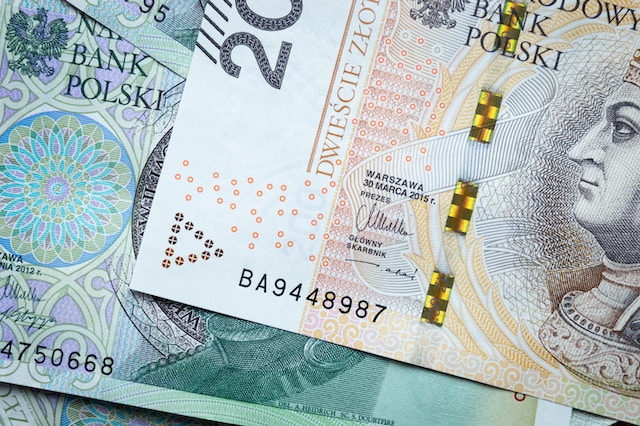Empowering You: How To Write a Check – A Step-by-Step Guide
Can seem daunting at first. This step-by-step guide will show you how to empower yourself and conquer this essential financial writing skill with ease.
Writing a check has become a lost art in the modern world, with most people paying for everything from groceries to rent with debit or credit cards. But there are times when writing a check is the only way to make payments, or when it’s just the preferred method. Writing checks may seem intimidating at first, but it’s actually quite simple. In this blog post, we’ll walk you through all the steps you need to know to write a check correctly and easily – so you can take control of your finances!

Introduction to Writing a Check
If you’re ever in a situation where you need to write a check, there are a few things you’ll need to do beforehand. First, gather the materials you’ll need: your checkbook, pen, and paper. Next, fill out the check form below and make sure to follow the instructions carefully. Once you’ve completed the form, sign it and give it to the person you’re writing the check to. Finally, be sure to write the amount of the check in numerals and write “payable” at the bottom of the check. That’s all there is to it!

Gather the Necessary Materials
Before you can write a check, you’ll need to gather the necessary materials. You’ll need your bank account information and the amount of money you want to write a check for.
To fill out your check, follow these steps:
First, make sure that the account information is correct. This includes the bank name, routing number and account number. You’ll also need the date of transaction and payee’s name or organization.
Next, review your amounts column on the right-hand side of your checksheet for any special instructions or calculations. These may include things like rounding off cents to whole numbers or changing a dollar amount to another currency. If there are no specific instructions listed, simply type in “$0” in this column and move on to writing down the rest of your information.
Banks tend to have standard amounts that all checks must abide by, but sometimes they will allow for more flexibility if it’s requested in writing (for example, an employer might be willing to let employees round off salaries to whole numbers).
When preparing your checksheet–or anything else related to accounting–always err on the conservative side and double-check everything! Mistakes happen easily when reviewing paperwork afterwords…especially if you’re tired from work!
Once you’ve filled out all of your columns correctly, sign below each row with matching signatures (names should match across columns). Finally print out a copy of your completed check sheet so that you can scan it into electronic documents later if needed (and keep one handy in case someone asks!).

Filling Out the Check
Filling Out the Check:
- Print out your check form. You can find this online or in a printable PDF format.
- Place the check form on top of your writing materials so that you have everything lined up in one place.
- Write down the following information:
- Your full name
- Date of birth (or date of organization if not a legal entity)
- Address where payment is to be made, including street number and suite/ unit number, if applicable
- City, state, and zip code where organization is located
- Complete all other required fields as stated on the check form instructions or as indicated below:
- Type of financial account to which payment should be made (checking, savings, money market mutual fund, CD account): Checking or Savings account? Money market mutual fund? CD account?: None given – leave blank for now b) Amount due (in dollars): $__ c) Telephone number where borrower can be reached during business hours:__ d) Email address where borrower can be reached during business hours:___ e) Signatureature of person making payment (print name):____ Date:______

How to Write the Amount of the Check
Writing the Numerical Amount
When you write a check, the most important part is to clearly note the amount of your purchase. To do this, divide the total value of your purchase by 100 and write this number after the check’s memo line or in parentheses next to “Amount.” Here are some examples:
$25.00 (25/100) = $2.50
$75.00 (75/100) = $7.50
Writing the Numerical Amount:
Writing the Written Amount
Writing a check is a simple process that can be easily learned with a little guidance. Follow these steps to write a check:
- Write the numerical amount of the check in the top left corner.
- Write the name of the person or organization you are writing the check to in the top right corner.
- Write the date of the check in the bottom right corner.
- Write your bank account number and routing number in the bottom left corner.
- Write your account number and expiration date in the bottom right corner.
Understanding the Decimal Point
When writing a check, there are a few things to keep in mind. First, write the amount of the check as a number with two decimal places. Next, look for the symbol for dollars ($) and insert it between the numbers. Finally, use a comma to separate each dollar amount from the next one. Here’s an example: $123.45
Understanding The Decimal Point
It can be tricky to understand where to put the decimal point when writing checks. There are three main options: before the number that represents cents (e.g., .89), after the number that represents cents (e.g., .98), or at the end of a number (e.g., 4). Here are some examples:
.89 before the number that represents cents (e.g., .89), .98 after the number that represents cents (e.g., .98), and 4 at the end of a number (e.g., 4).
Adding a Memo Line
If you write a check payable to someone else, and want to include the person’s name and phone number on it, there are a few things you need to do. First, find the person’s social security number in the United States Social Security Administration’s (SSA) database. The easiest way to do this is to use their last name and first initial as your search terms. Second, place that social security number above the memo line at the bottom of your check. Finally, write “For Dr. John Doe” in ink above the social security number.

Signing the Check
To sign a check, you will need to hold the pen with the left hand and extend your right hand holding the check. The bottom of the check should be facing up when you sign it. Try to avoid making any carvings in the check or write too heavily into it.

Post-Check Writing Tips and Considerations
If you have any questions about writing a check, or need help filling out the form, don’t hesitate to contact your bank or financial institution.
Wrapping Up: You Can Now Write a Check!
Now that you’ve mastered the art of writing a check, it’s time to put your newfound skills to use! Here are some tips for maximizing your check-writing experience:
- Make a list of the items you’ll be purchasing and jot down the corresponding amounts on your check. This will help keep track of your finances and make for a smoother checkout process.
- Always double-check the amount you’ve written down before signing the check. If there’s a discrepancy, you can always correct it before submitting it to the bank.
- When writing a check for a large purchase, break it down into smaller payments to avoid any unnecessary fees.
- Always keep a copy of your check in case there are any questions or issues with it later on.
- Take care when signing your name to the check – mistakes can easily be corrected with a pen and paper, but ink can be difficult to remove once it’s been applied!
Congratulations! You have now learned how to write a check. Writing a check is a valuable skill that will help you manage your finances and keep track of your spending. With this newfound knowledge, you can confidently and securely make payments without having to worry about carrying cash or using credit cards. We hope this guide has been helpful in empowering you to write a check with ease.
Questions
Who can write a check?
Anyone with a checking account.
What do I need to write a check?
Pen, checkbook, payee & amount info.
How do I write a check?
Follow instructions on your checkbook.
What if I make a mistake?
Void the check & start over.








